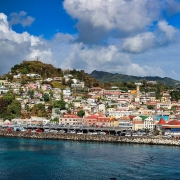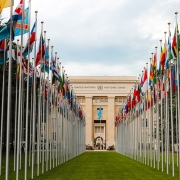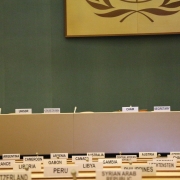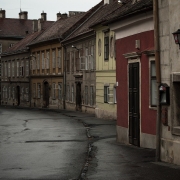What caused the post-war economic miracle in Western Europe?
Topic of Study [For H2 History Students]:
Paper 1: Understanding the Global Economy (1945-2000)
Section B: Essay Writing
Theme II Chapter 1: Reasons for growth of the global economy
Picking up the pieces: Post-war reconstruction
By the time the World War Two had concluded, many European nations were badly damaged by the military campaigns, especially Germany. A 1953 United States report noted that the Allied bombing campaign in Dresden had destroyed at least 50 percent of its residential buildings and at least 23 percent of the city’s industrial buildings.
Government leaders sought to introduce domestic policies to re-build their economies. At the same time, they turned to foreign aid and assistance, such as the United States, to augment their post-war plans.
In this article, we will be examining the case study of West Germany. It is important to note that other parts of Western Europe also experienced rapid economic growth in the early post-war years, such as France (Les Trente Glorieuses).
Wirtschaftswunder: The German Economic Miracle
Enter Ludwig Erhard. From 1949 to 1963, Erhard assumed the role as Minister of Economic Affairs under Chancellor Konrad Adenauer to spearhead the post-war economic reforms in West Germany. Erhard embarked on a multi-pronged approach to revive West Germany’s economy.
For example, Erhard came up with the currency reform (Deutsche Mark) on 22 June 1948 to replace the old Reichsmark. The West German government also imposed price control measures to avert the hyperinflation and the expansion of a black market.
On 25 June 1948 currency reform was introduced in the Western zones. The old money would be exchanged at a rate of one-tenth of the new, though for a while the two currencies ran side by side. The SBZ (Soviet Occupation Zone) had been excluded from monetary reform because the Russians could not have been trusted to print the right amounts. By June 1948 Ludwig Erhard had made arrangements to print 500 tons of banknotes in the US and have them airlifted to Frankfurt. Virtually all rationing and price controls were abolished.
An excerpt from “After the Reich: The Brutal History of the Allied Occupation” by Giles MacDonogh.
As a result of Erhard’s guidance, the West Germany economy flourished. The Deutsch Mark had encouraged the citizens to use it as a new currency for consumption of goods and services. People reduced their reliance on barter trade and the black market. With greater access to essentials like food, the Germans increased their time spent on work. From 1948 to 1958, industrial production increased more than four times its annual rate.
Changing priorities: Foreign aid and assistance & the Marshall Plan
Following the United States Secretary of State James Byrnes’ speech on 6 September 1946, the Western powers changed its stance towards the West German zones, focusing on post-war economic recovery. They focused on the recovery of key industries that produced coal, iron and steel. The United States also announced the introduction of the Marshall Plan on 5 June 1947, offering financial aid to European nations for reconstruction.
The influx of Marshall Plan funds intensified the new faith in the Deutsche Mark and hastened the reconstruction of West German capital and fixed assets. Although the economy was still subject to various Allied controls and rationing, the West German people now possessed sufficient confidence in the economy to conduct normal business and participate in the free circulation of goods and money that is so critical to a healthy economy.
… The combination of the currency reform, Marshall Plan funds, and the social market economy has been described as the foundation on which the expansion of the economic miracle was based. With the industrial boom prompted by the Korean War, the West German GNP (Gross National Product) gained 67 percent in real terms and industrial output rose by 110 percent between 1948 to 1952.
An excerpt from “Selling the Economic Miracle: Economic Reconstruction and Politics in West Germany, 1949-1957” by Mark E. Spicka.
What can we learn from this article?
Consider the following question:
– How far do you agree that the United States was chiefly responsible for the post-war economic miracle in Western Europe?
Join our JC History Tuition and learn more about the Global Economy (1945-2000). The H2 and H1 History Tuition feature online discussion and writing practices to enhance your knowledge application skills. Get useful study notes and clarify your doubts on the subject with the tutor. You can also follow our Telegram Channel to get useful updates.
We have other JC tuition classes, such as JC Math Tuition and JC Chemistry Tuition. For Secondary Tuition, we provide Secondary English Tuition, Secondary Math tuition, Secondary Chemistry Tuition, Social Studies Tuition, Geography, History Tuition and Secondary Economics Tuition. For Primary Tuition, we have Primary English, Math and Science Tuition. Call 9658 5789 to find out more.





